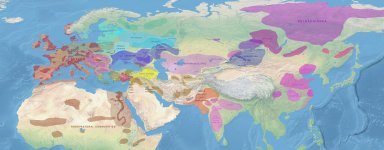torzio
Regular Member
- Messages
- 3,970
- Reaction score
- 1,234
- Points
- 113
- Location
- Eastern Australia
- Ethnic group
- North East Italian
- Y-DNA haplogroup
- T1a2 - SK1480
- mtDNA haplogroup
- H95a
The Revolt of 6 AD was one of the few occasions where different Illyrian peoples entered in a coalition against a common enemy. The main Illyrians who contributed to the alliance were the Daesitiates, Breuci, Dalmatae, Andizetes, Pannonians, Pirustae, Liburnians and Japodes( the latter two fighting under an unknown leader).[10] The Daesitiates were led by Bato the Daesitiate, while the Breuci were led by their king Pinnes and Bato the Breucian, their army commander.Batos' revolts, I've set the apostrophe on the wrong place. Yes, Bellum Batonianum. But certainly the whole process of the "incorporation" of the Illyrian core region into the Roman Empire was brutal to the Illyrian ethnos. Population displacements and replacements followed.
The Liburnians and the Japodes where led by women and did not participate once the 4 year war began.
see others below who did not participate

and only the purple and yellow areas in map below where in the war






